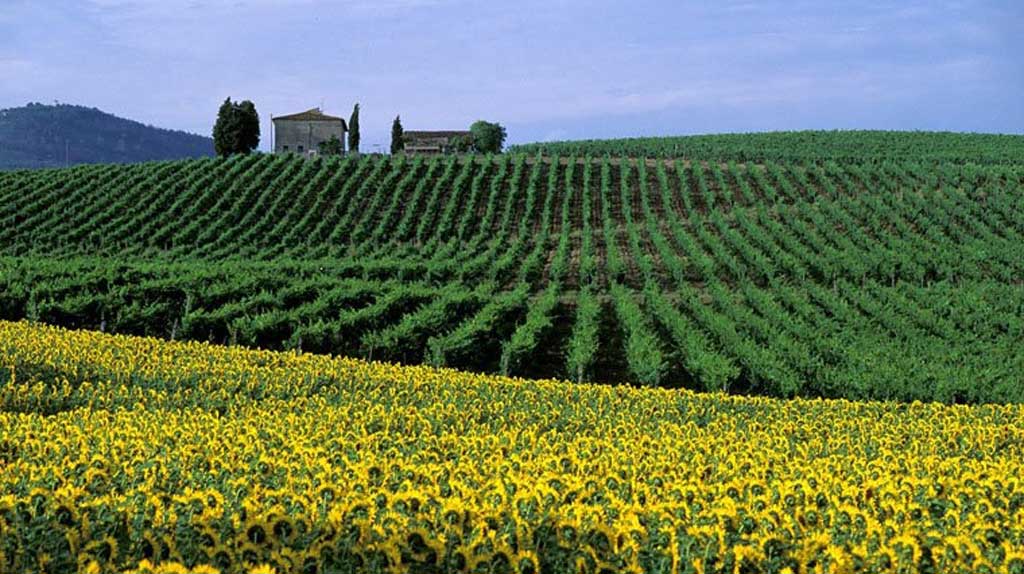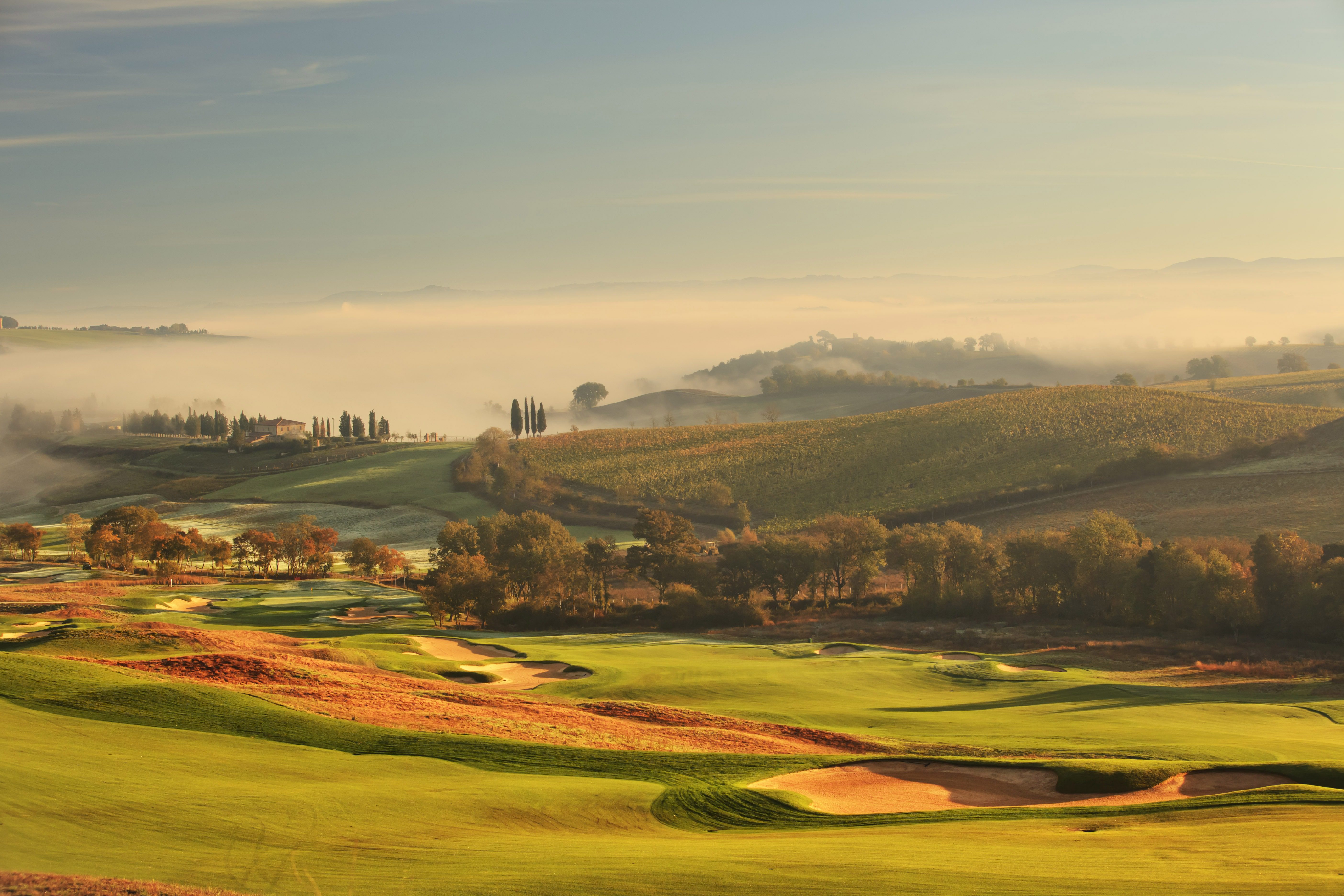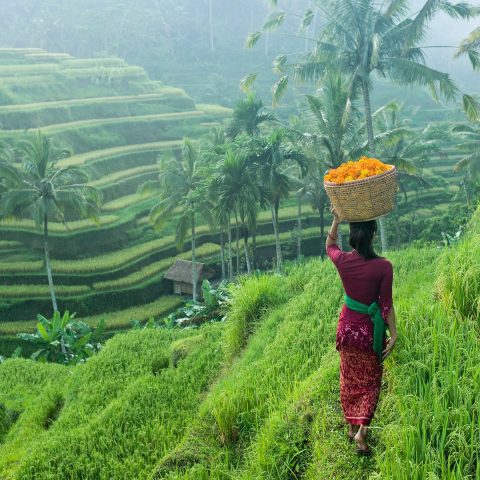
Tuscany is a necessary part of any cultural education, as it has been for centuries.
By Eva Stelzer
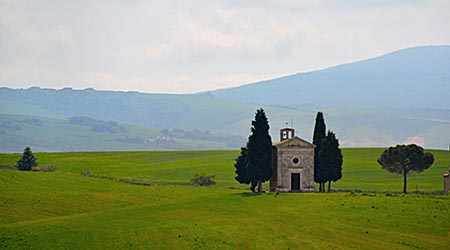 Tuscany long ago earned its reputation for capturing the very essence of Italy – picturesque rolling hillsides with vineyards and charming medieval towns. The geography varies dramatically: coastal cities teeter along the Tyrrhenian Sea, while lush mountains, quaint hill towns and river plains stretch far inland. Add to this beauty seeing some of the world’s famous art in person. One of many reasons we are drawn to Italy and other European destinations is that touring “the Continent” always has been part of the ultimate educational experience.
Tuscany long ago earned its reputation for capturing the very essence of Italy – picturesque rolling hillsides with vineyards and charming medieval towns. The geography varies dramatically: coastal cities teeter along the Tyrrhenian Sea, while lush mountains, quaint hill towns and river plains stretch far inland. Add to this beauty seeing some of the world’s famous art in person. One of many reasons we are drawn to Italy and other European destinations is that touring “the Continent” always has been part of the ultimate educational experience.
In the early days, “finishing” one’s education meant visiting the cultural centers of Europe, often for extensive periods of time. This wasn’t only for the very wealthy, although they of course might spend years traveling; those on the higher end of the working class often attached their young people to wealthier relatives who would take them on the “Grand Tour.”
In the early days, “finishing” one’s education meant visiting the cultural centers of Europe, often for extensive periods of time.
Most people recognize Tuscany, Florence specifically, as the birthplace of the Renaissance – a time of learning, beauty, and certain artistic movements. It is the birthplace of fame: Botticelli, Dante, Michelangelo, da Vinci and Galileo. The extensive gardens of Tuscany were sculpted and changed by architects to create those picturesque hills and cypress-lined lanes. Painters immortalized the breathtaking landscape in their art. This art and the cultural environment in which it was produced cannot be properly appreciated through a computer screen – you must see the art for yourself, taste the food and wine, and fully immerse in the aesthetics, culture, history and architecture of this ancient region.
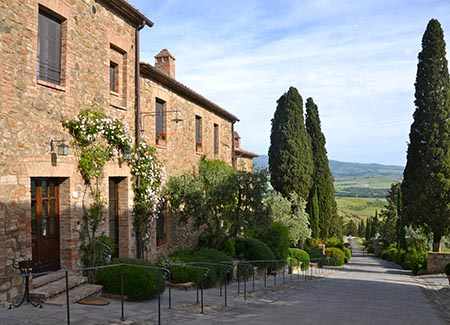 Architectural development changed between the Middle Ages and Renaissance. As societies became more settled and the threat of violent overtaking of one’s feudal lord became less likely, people began to build towns outside of the walls of their protectorates. People learned trades and supplied the masses rather than working for one nobleman, and so also came a small modicum of leisure time and more profit. This gave people the ability to indulge in beauty for its own sake and sparked the Renaissance. The reason these ancient towns with their “Old World charm” still exist at all is that in Europe, as travel and transportation modernized, the old towns were simply circumvented, leaving small pockets of historic architecture for us to enjoy in our travels.
Architectural development changed between the Middle Ages and Renaissance. As societies became more settled and the threat of violent overtaking of one’s feudal lord became less likely, people began to build towns outside of the walls of their protectorates. People learned trades and supplied the masses rather than working for one nobleman, and so also came a small modicum of leisure time and more profit. This gave people the ability to indulge in beauty for its own sake and sparked the Renaissance. The reason these ancient towns with their “Old World charm” still exist at all is that in Europe, as travel and transportation modernized, the old towns were simply circumvented, leaving small pockets of historic architecture for us to enjoy in our travels.
Florence, the region’s capital, is home to many famous art galleries that capture the essence of Tuscan art. The Uffizi Gallery displays famous paintings such as The Annunciation and Adoration of the Magi by Leonardo da Vinci and The Birth of Venus and Primavera by Sandro Botticelli. The sheer size of Botticelli’s paintings can only be appreciated in person at the Uffizi, as is true with many works of art.
In the 19th century, Giovanni Fattori led the Macchiaioli art movement. This describes the Tuscan painters who broke with traditional techniques of “inventing” landscapes in their minds, adding hills and the iconic cypress trees, instead making use of natural light and colours by painting outside. The Renaissance art movement that has immortalized Tuscany began with an architectural vision of what nature should and could look like! A perfect example can be seen in and around the Renaissance town of Pienza and on the route between Pienza and the small town of Monticchiello.
The Renaissance art movement that has immortalized Tuscany began with an architectural vision of what nature should and could look like.
Most people get excited upon seeing Michelangelo’s David when entering the Piazza della Signoria, only to learn the outdoor statue is a copy. This copy of the statue stands where the original stood centuries ago to give viewers historical context. The nearby Accademia Gallery has since the 1800s held the real David, which was sponsored by the Cathedral of Florence as a Biblical representation from David and Goliath. When the Board saw the finished statue, it was decided it was far too perfect to be placed in its intended niche high in the Cathedral, and they agreed another location must be chosen. Because of the amazing talent it took to create the 14-foot statue in marble over two years, and the fact that it is considered a perfect rendition of the human body, medical professionals and art observers alike flock to see it and marvel at his work.
Whether you wish to visit the birthplace of the Renaissance, explore the arts, or want to see for yourself the rolling hills, endless vineyards and stone-built towns, Tuscany is a necessary part of your cultural education as it has been for centuries. Join us on one of our Tuscan adventures and discover the art of Florence, the iconic hills of the Tuscan countryside, and a perfect Renaissance town and its local culture. With Evia’s Tuscan Backstage Pass Tour, you won’t miss a thing. It is a fully guided tour of all the best of the scenery and art, complemented by great food and wine. Check out the trip here eviactive.com/tuscany-back-stage-pass or contact Eva at info@eviactive.com.
Images: courtesy of Eva Stelzer.
By: Eva Stelzer (Article first published in WestmountMag.ca September 2, 2015 http://www.westmountmag.ca/exquisite-beauty-paracas/)
Eva Stelzer is the owner and founder of Evia, a bespoke travel service. A former academic, she has spent many years delivering experiential journeys and travel writing. Learn more at eviactive.com



